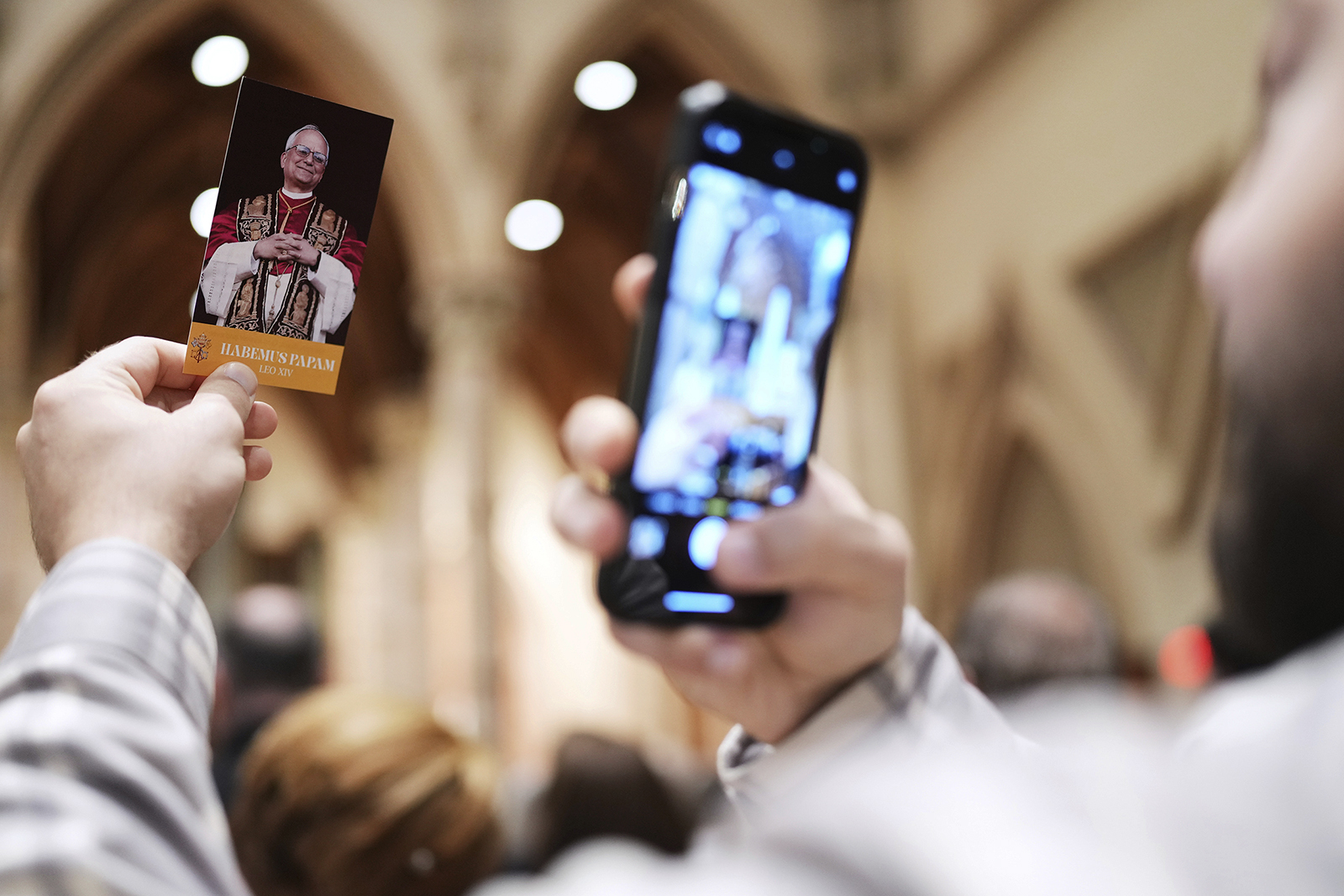
VATICAN CITY (RNS) — When Cardinal Robert Prevost emerged from the loggia of St. Peter’s as Pope Leo XIV on Thursday (May 8), robed in white and wearing the traditional red mozzetta, he also brought with him a sizable digital footprint, a first for a pope.
Popes are elected without a background check or a medical exam, much less a quick cleanse of their past tweets, posts and reels. Already, videos of Prevost singing “Feliz Navidad” in Peru or attending the 2005 World Series to watch his favorite baseball team, the Chicago White Sox, win game two are going viral.
Under the unassuming name Robert Prevost, the new pope owns a Facebook account with 172 friends and only a few autobiographical notes: Works in the Catholic Church, “liked” the listening center of the Diocese in Chiclayo, which he led as bishop between 2015 and 2023. He follows a retreat center in Lambayeque, in northern Peru, called “La Esencia Monsefuana,” which presents itself as “a country house with a spiritual, family oriented and health-conscious atmosphere.”
His Facebook page, set to private, can be seen only by Facebook friends. The only public post, dated June 29, 2020, shows him, wearing a black shirt, gray slacks and aviators, atop a horse.
“I personally put, every once in a while, something on Facebook and I am amazed by the very quick response that I receive from around the world,” Prevost told Catholic News Service in 2012.

Some of Robert Prevost’s most recent X posts. (Screen grab)
“I’ll put a little piece of news up there, an invitation, a little reflection at times and that is a way of reaching people. So, I think that the church needs to be sophisticated also in the use of the social networks that are available to us, it’s just one more way of reaching out to people,” he added. He talked about the importance of providing context and tools for discernment for people on social media, which he said can often be misleading.
In his social media account on X (@drprevost), which he joined in 2011, Pope Leo XIV offers more hints into what moved, stirred and concerned him in 439 posts beginning in 2014.
His first post, in March 2014, roughly a year after Francis’ election as pontiff, he shared a post by the Midwestern Augustinians boasting their online presence. But as he got the hang of it, he began to swim in the online space known as “Catholic Twitter,” retweeting the account of Rocco Palmo, an American journalist and author of Whispers in the Loggia, a blog tracking news and developments in the church’s leadership.
Prevost also retweeted articles by U.S. media covering the Catholic Church, including Crux, Catholic News Service and Catholic News Agency.
In any other social media poster, his retweets might signal a political liberal. Most recently he retweeted an article by the National Catholic Reporter titled, “JD Vance is wrong: Jesus doesn’t ask us to rank our love for others,” referring to the U.S. vice-president’s use of the theological term “ordo amoris” to state that faithful have a hierarchy of love that starts from one’s family, to friends and neighbors, fellow citizens and then people from other countries.
He also reposted a tweet by Jesuit the Rev. James Martin, a leading voice for outreach toward LGBTQ+ Catholics in the U.S., where he criticized the banning of Syrian refugees from the country. “What an immoral nation we are becoming. Jesus weeps,” the tweet read.
But Prevost also retweeted posts that strongly criticize gender theory and shared a story by Catholic News Agency challenging Hillary Clinton’s pro-abortion stance.
“What he may have posted or tweeted or said is not him speaking as Leo XIV,” said Katy Prejean McGrady, host of Sirius XM’s Catholic channel. His social media usage tells us, she said, that “Our Holy Father is a man whose gift is one of input; he is willing to read listen and observe what is out there.”
“He is a scroller, a kind of a twitter lurker … and so am I!” she added.
In most of his social media activities, Prevost can be seen following the messaging of Pope Francis, a strong advocate for immigrants and refugees who also condemned gender ideology as “ideological colonization.”
In one of the few posts he penned himself, Prevost wrote in 2015, “it’s time to end the death penalty.” He also promoted messages and initiatives aimed at protecting the environment. He posted content, as well, that aimed to raise awareness of sexual abuse, including posts by a former member of the Vatican’s Pontifical Commission for the Protection of Minors, the Rev. Hans Zollner.
Earlier this year the Survivors Network of those Abused by Priests filed a complaint at the Vatican against then-Cardinal Prevost, alleging he mishandled abuse cases in Chicago in 2000 and in Peru in 2022. Some abuse survivor advocates, including Zollner, have spoken in defense of Prevost’s actions.
Francis did not run his official social media account, @Pontifex, and his aides were shown setting up video calls for him during his daily conversations with the Holy Family Parish in Gaza. Leo may be more conversant with technology: Reports since his election have him asking his brother John Prevost why he didn’t answer his calls during a video call to share the news.
“It gives me hope that he has his finger on the pulse like no pope did before,” Prejean McGrady said, adding that for a pope known for his work as a missionary, the Internet provides a massive continent for evangelization.
